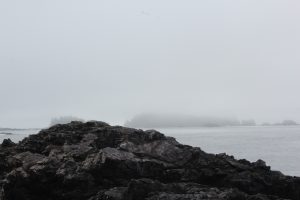
In the process of determining the criteria for the MCE, we initially included rugosity as our third factor. Rugosity, which is the roughness of the seabed, will also impact marine species richness. For instance, one of the main drivers that control the abundance of glass sponge reef in the Salish Sea is rugosity (Dunham et al., 2018). The higher the unevenness of the sea bed is, the greater the reef coverage of the surface is. However, rugosity will only influence the ecosystem on the seafloor, and its impact on the overall marine species richness is insignificant. Therefore, in order to simplify our design, we decided to exclude rugosity.
We also did not take socio-economic impacts into account. We recognize that our MPA will have a negative impact on local livelihoods, especially economically due to its presence on top of salmon trawling grounds. We also did not consider the effect of our MPA on impossible local Indigenous communities. Banning fisheries in that location may also affect the cultural or traditional practices of Indigenous people.
We only had access to open/public data which may have limited the extent of our analysis and research question. There are a lot of restricted private data that records information like distributions of endangered whale populations but we have no access to. This will limit the scope of our research and the number of species we can include.
Continue to our conclusion.